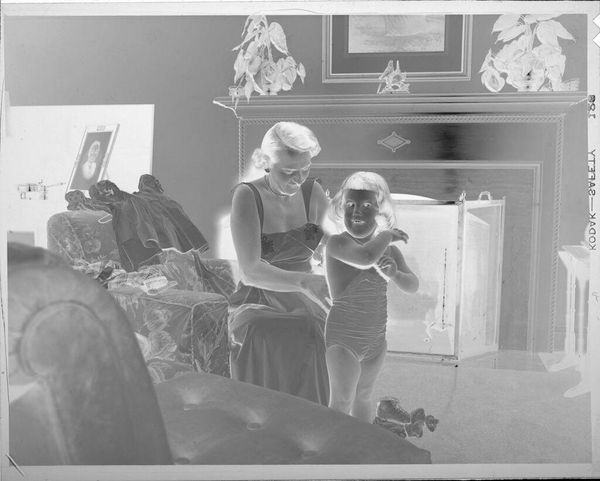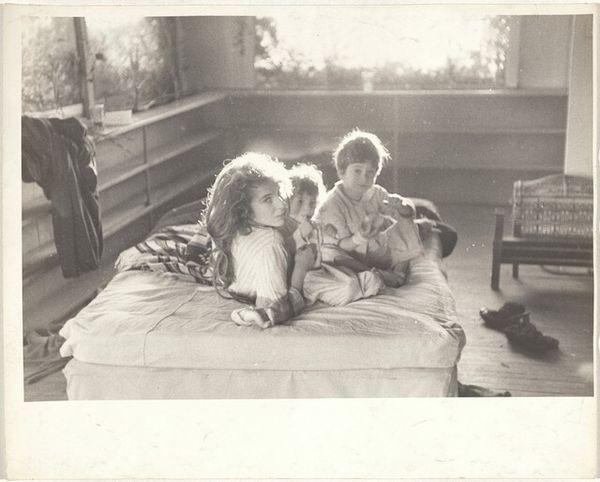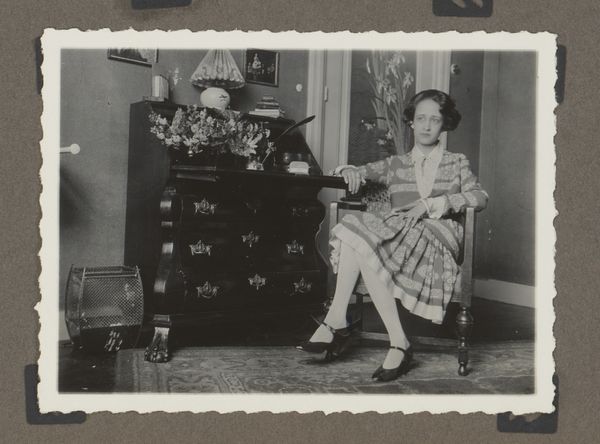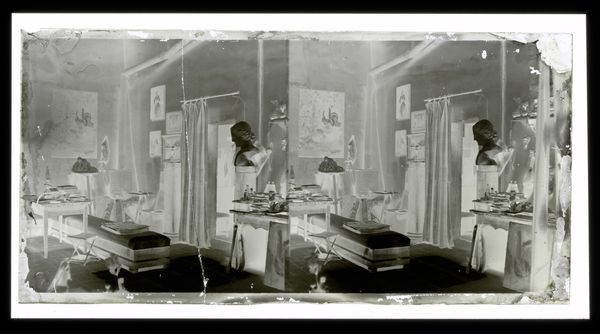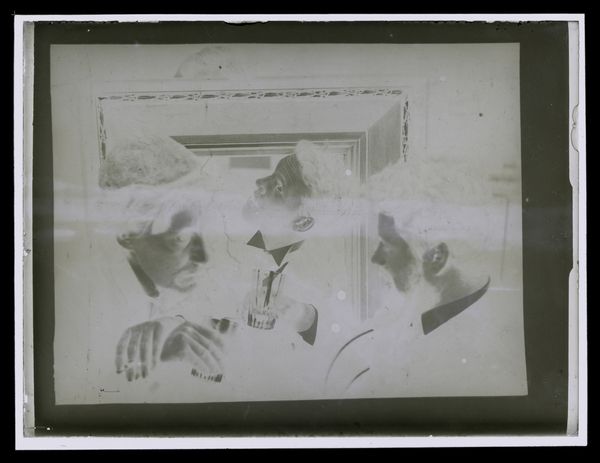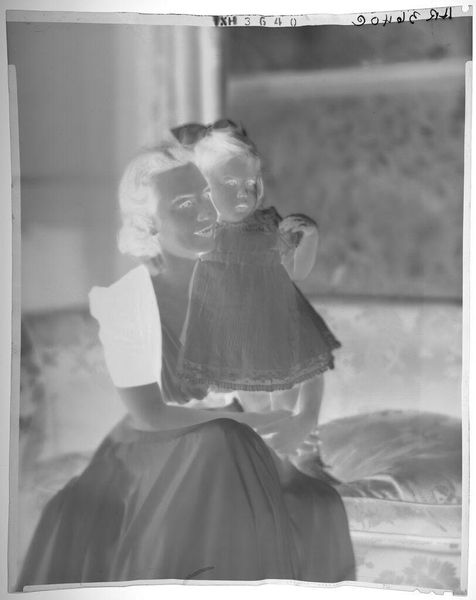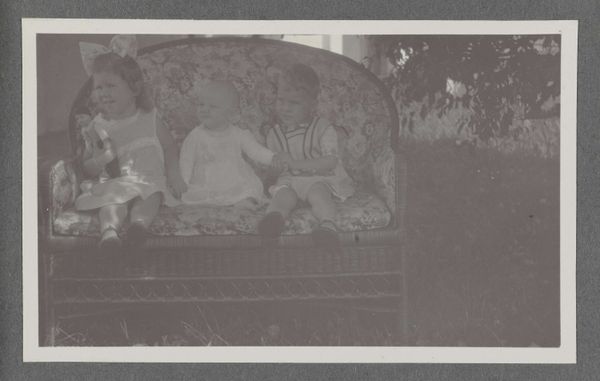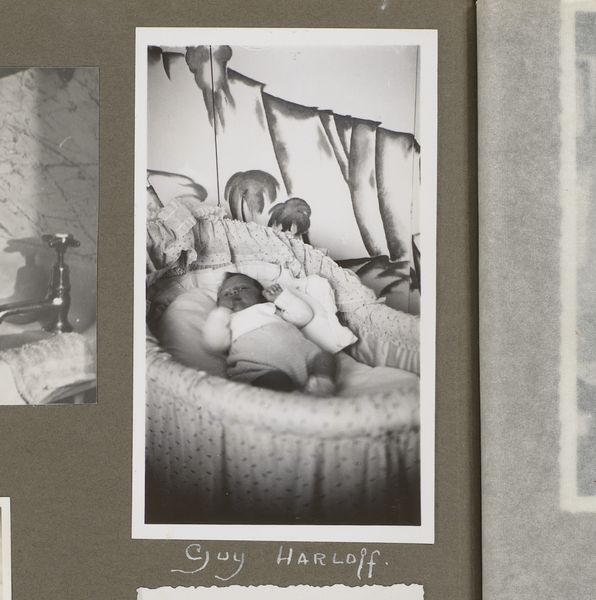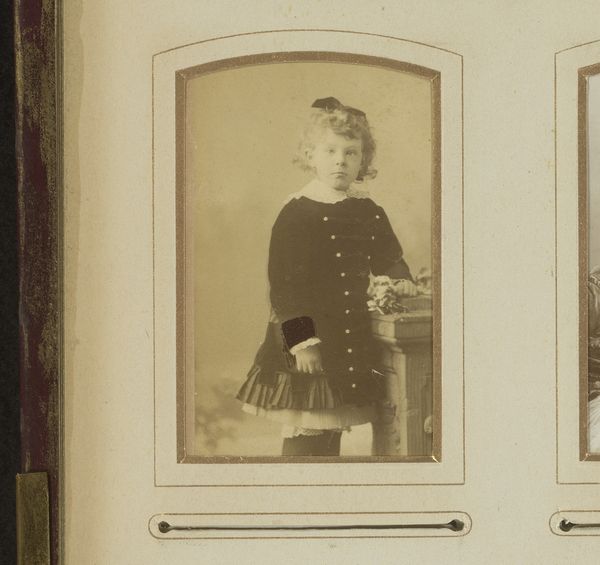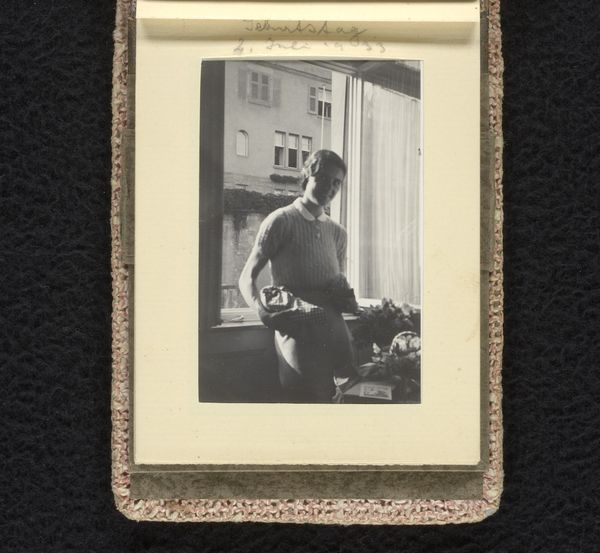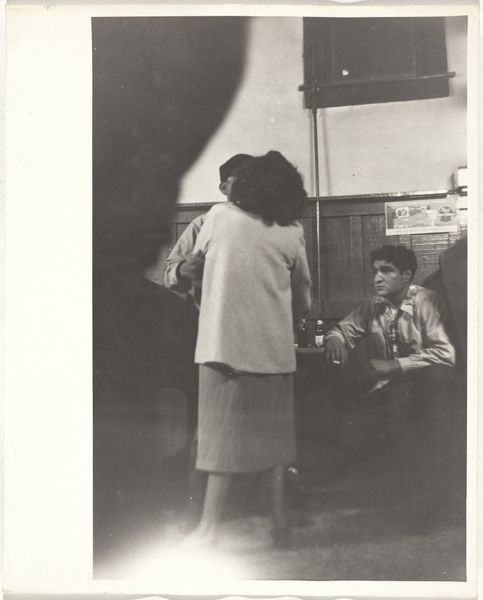
photography
#
portrait
#
still-life-photography
#
pictorialism
#
photography
#
historical photography
#
genre-painting
Dimensions: overall: 7.8 x 13.6 cm (3 1/16 x 5 3/8 in.)
Copyright: National Gallery of Art: CC0 1.0
Curator: This photographic work, "Untitled (Two women looking in mirror)," dating from circa 1900 to 1910, is immediately evocative, isn't it? There’s something deeply personal captured in the print. Editor: It definitely gives an intimate peek into another era. The monochromatic palette creates a timeless quality, but the composition feels a bit… off balance? Almost claustrophobic, the way the subjects are framed within frames—mirrors, windows, even the borders of the image itself. Curator: Yes, precisely! Note the composition: we see two women at what appears to be a vanity, their attention captivated by their reflections. But is that a third person, a photographer, visible in the larger mirror? The layering is complex, forcing us to question the viewpoint and intention. The mirroring motif creates an echo. Editor: This highlights photography's burgeoning role at the turn of the century as a social marker. These women are participating in the ritual of observing and representing themselves; they want to capture that image, perhaps even share it, shaping the public image that society dictates they adhere to. It makes me think about the performative nature of identity itself. Curator: Intriguing idea! Pictorialism, very dominant at the time, prioritized aesthetic effect over documentary precision. It tried to create fine art through photography, resulting in compositions intended to resemble paintings. I like to believe it highlights how individuals constructed images to emulate popular paintings of feminine archetypes at the time. Editor: But even the materials tell a story, right? A photograph as fragile as this, susceptible to fading and damage over time, reflects the ephemeral nature of the moment captured—and the shifting ideals of beauty and self-presentation across decades. These objects were treasured, made accessible, and shared among the elite. The women could control the art historical image they were attempting to become through photographic representation. Curator: I appreciate how you contextualize it historically. The ambiguity of the subjects' gazes also invites further exploration. Do their reflections reveal genuine selves, or carefully constructed personas? Does the presence of the photographer violate that reflective, intimate act? Editor: It certainly prompts us to think about how photographs shape our perceptions of history. Curator: Indeed, how history is quite literally reflected through personal and social lenses. It is not often that we observe ourselves in such detail in an historical work, let alone our roles in propagating art to be consumed in the future. Editor: It makes me want to inspect more family photographs— to be more invested in photographic practices from different generations.
Comments
No comments
Be the first to comment and join the conversation on the ultimate creative platform.
